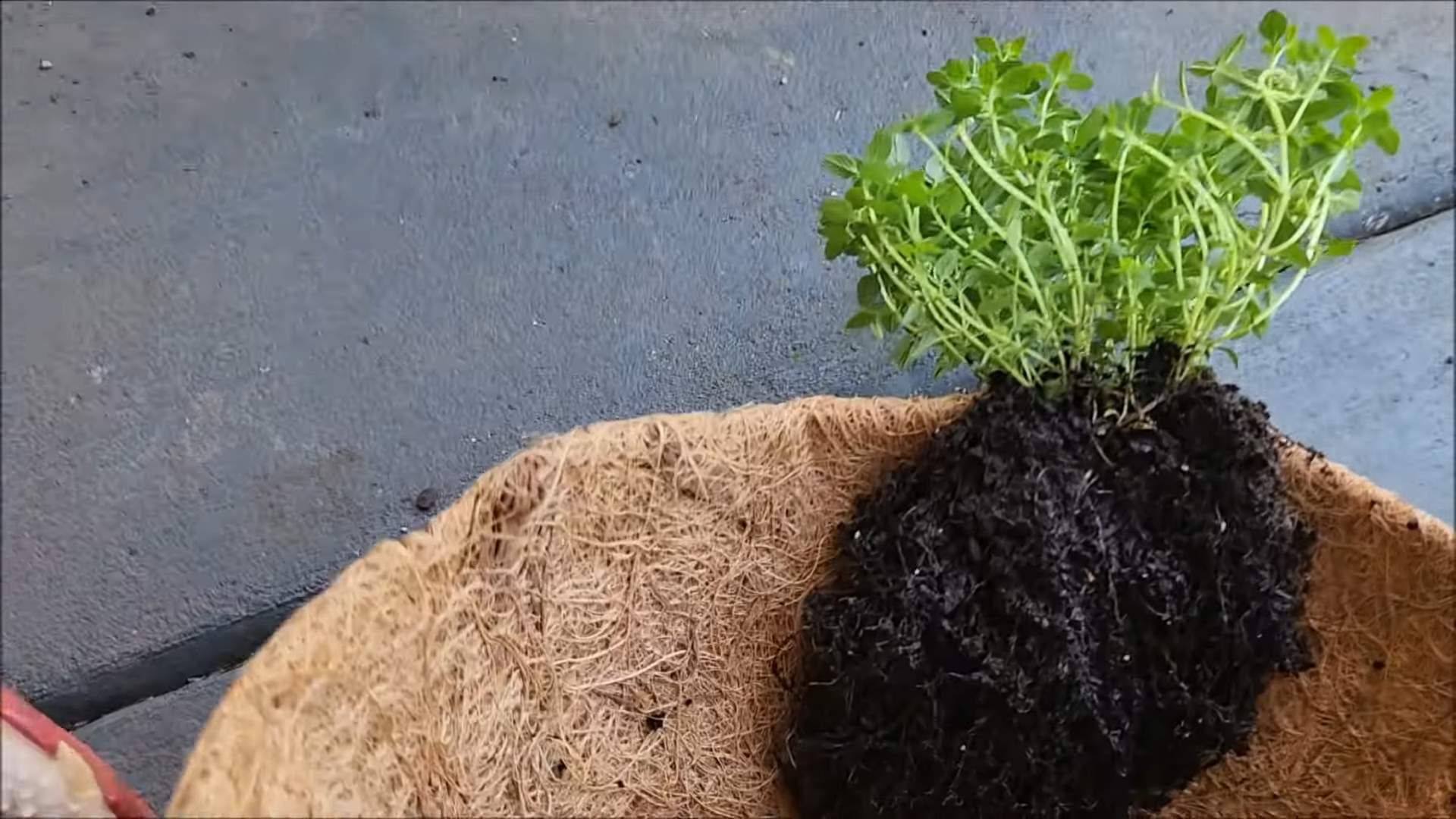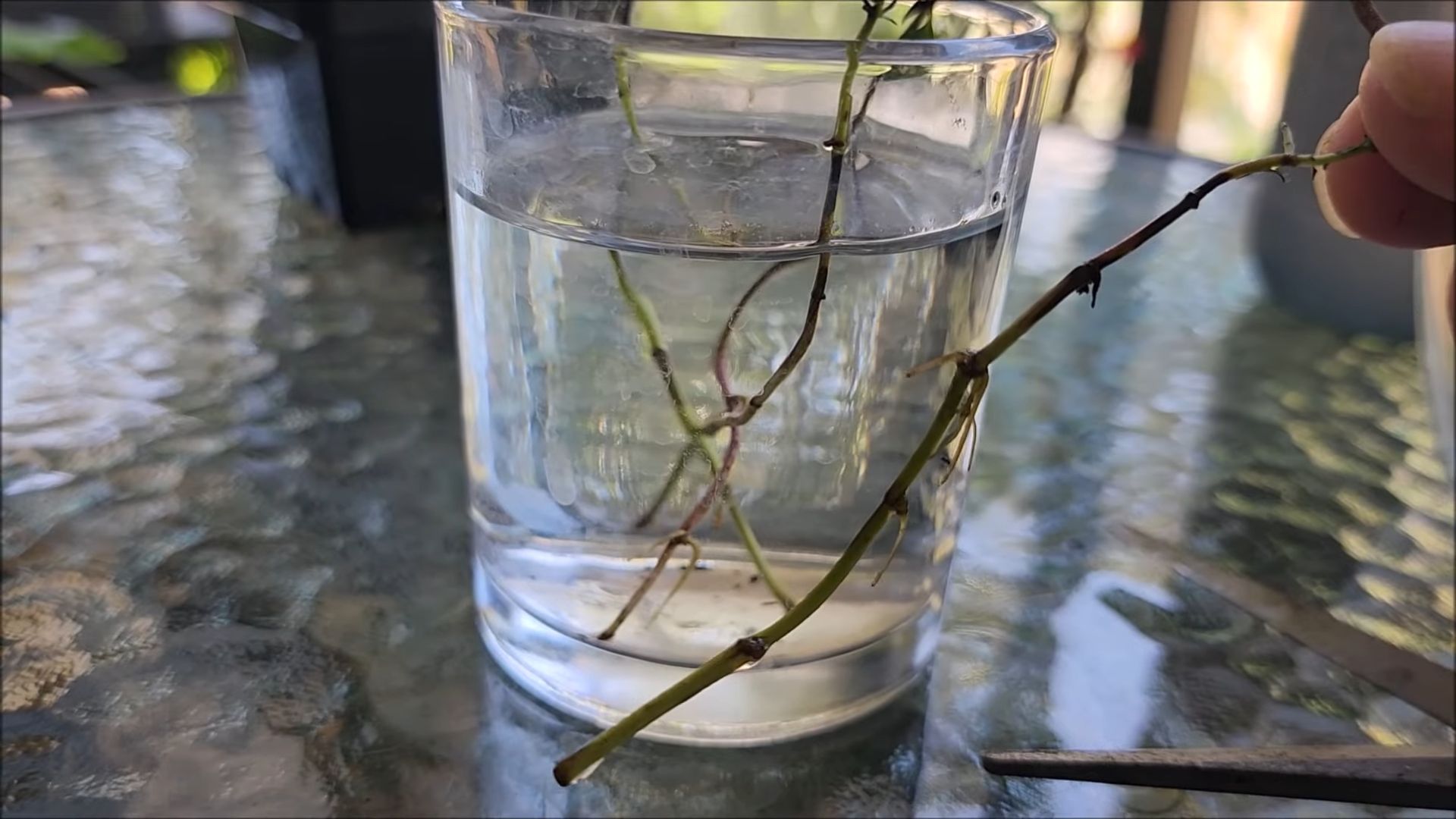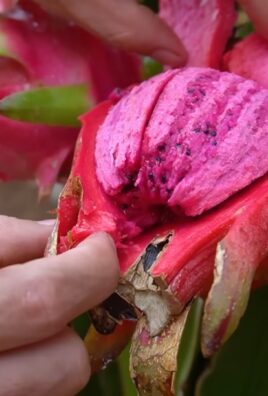Growing thyme indoors can feel like a secret superpower for any home cook or gardening enthusiast! Imagine having fresh, fragrant thyme readily available, no matter the season, right on your windowsill. Forget those sad, wilted sprigs from the grocery store – we’re talking vibrant, flavorful thyme at your fingertips.
For centuries, thyme has been more than just a culinary herb. Ancient Egyptians used it in embalming rituals, while the Greeks associated it with courage and bravery. Romans spread thyme throughout Europe, using it to purify their homes and flavor their cheeses and liqueurs. Its rich history speaks to its enduring value and versatility.
But why should *you* bother learning how to grow thyme indoors? Well, let’s be honest, life gets busy! Running to the store every time you need a pinch of thyme for your favorite recipe is a hassle. Plus, store-bought herbs can be expensive and often lack the robust flavor of homegrown varieties. With this DIY guide, I’ll show you simple, effective tricks to successfully growing thyme indoors, saving you time, money, and adding a touch of green to your living space. Get ready to unlock the secrets to a thriving indoor thyme garden – it’s easier than you think!

Growing Thyme Indoors: A Beginner’s Guide to Fresh Herbs Year-Round
Hey there, fellow plant enthusiasts! I’m so excited to share my experience with growing thyme indoors. It’s surprisingly easy, and having fresh thyme readily available for cooking is a total game-changer. Plus, the aroma is just divine! Let’s dive into how you can bring this fragrant herb into your home.
Choosing the Right Thyme Variety
Before we get started, it’s important to know that not all thyme is created equal. Some varieties are better suited for indoor growing than others. Here’s a quick rundown:
* **English Thyme (Thymus vulgaris):** This is the most common type and my personal favorite. It has a classic thyme flavor and is relatively easy to grow indoors.
* **Lemon Thyme (Thymus citriodorus):** As the name suggests, this variety has a lovely lemon scent and flavor. It’s a bit more delicate than English thyme but still manageable indoors.
* **Creeping Thyme (Thymus serpyllum):** While beautiful as a ground cover outdoors, creeping thyme isn’t the best choice for indoor containers. It tends to spread and can be difficult to contain.
I highly recommend starting with English thyme. It’s a hardy and forgiving option for beginners.
What You’ll Need
Okay, let’s gather our supplies. Here’s what you’ll need to successfully grow thyme indoors:
* **Thyme Seeds or a Starter Plant:** You can start from seeds, but buying a small plant from a local nursery or garden center will give you a head start.
* **Well-Draining Pot:** Choose a pot that’s at least 6 inches in diameter with drainage holes. Thyme doesn’t like to sit in soggy soil.
* **Well-Draining Potting Mix:** A mix specifically formulated for herbs or vegetables is ideal. Avoid using garden soil, as it can be too heavy and compact.
* **Grow Lights (Optional but Recommended):** While thyme loves sunlight, it can be tricky to provide enough natural light indoors, especially during the winter months. Grow lights will ensure your thyme gets the light it needs to thrive.
* **Watering Can or Spray Bottle:** For gentle watering.
* **Small Gardening Trowel:** For transplanting.
* **Scissors or Pruning Shears:** For harvesting and trimming.
* **Fertilizer (Optional):** A balanced liquid fertilizer diluted to half strength can give your thyme a boost.
Step-by-Step Instructions: Planting Thyme
Whether you’re starting from seeds or a starter plant, the planting process is pretty straightforward.
1. **Prepare the Pot:** Fill your pot with the well-draining potting mix, leaving about an inch of space at the top.
2. **Planting Seeds (If Starting from Seed):** Sprinkle the thyme seeds evenly over the surface of the soil. Gently press them down, but don’t bury them too deep. Thyme seeds need light to germinate. Lightly mist the soil with water.
3. **Transplanting a Starter Plant (If Using a Starter Plant):** Gently remove the thyme plant from its original container. Loosen the roots slightly with your fingers. Dig a small hole in the center of the pot and place the thyme plant in the hole. Make sure the top of the root ball is level with the soil surface. Fill in around the plant with potting mix and gently press down.
4. **Water Thoroughly:** Water the thyme plant until the water drains out of the bottom of the pot. This will help settle the soil and ensure the roots are properly hydrated.
5. **Placement:** Place your thyme plant in a sunny location that receives at least 6 hours of direct sunlight per day. If you’re using grow lights, position them about 6-12 inches above the plant.
Caring for Your Indoor Thyme
Now that your thyme is planted, it’s time to learn how to keep it happy and healthy.
Watering
* **Don’t Overwater:** Thyme is drought-tolerant and prefers to dry out slightly between waterings. Overwatering can lead to root rot, which is a common problem for indoor plants.
* **Check the Soil:** Before watering, stick your finger into the soil. If the top inch feels dry, it’s time to water.
* **Water at the Base:** Water the thyme plant at the base, avoiding getting the leaves wet. This will help prevent fungal diseases.
* **Proper Drainage:** Ensure your pot has good drainage holes to prevent water from accumulating at the bottom.
Light
* **Sunlight is Key:** Thyme needs plenty of sunlight to thrive. Aim for at least 6 hours of direct sunlight per day.
* **Supplement with Grow Lights:** If you don’t have enough natural light, use grow lights to supplement.
* **Rotate Regularly:** Rotate your thyme plant regularly to ensure all sides receive equal light exposure. This will prevent it from becoming leggy and growing towards the light source.
Temperature and Humidity
* **Ideal Temperature:** Thyme prefers temperatures between 60-70°F (15-21°C).
* **Avoid Extreme Temperatures:** Keep your thyme plant away from drafts and extreme temperature fluctuations.
* **Moderate Humidity:** Thyme doesn’t require high humidity. Normal household humidity levels are usually sufficient.
Fertilizing
* **Light Feeding:** Thyme doesn’t need a lot of fertilizer. Over-fertilizing can actually harm the plant.
* **Use a Balanced Fertilizer:** If you choose to fertilize, use a balanced liquid fertilizer diluted to half strength.
* **Fertilize Sparingly:** Fertilize only once a month during the growing season (spring and summer).
Pruning and Harvesting
* **Regular Pruning:** Pruning is essential for keeping your thyme plant compact and bushy.
* **Pinch Back Stems:** Pinch back the tips of the stems regularly to encourage branching.
* **Harvest Frequently:** Harvesting thyme actually encourages new growth.
* **How to Harvest:** Use scissors or pruning shears to cut off stems as needed.
* **Don’t Remove Too Much:** Avoid removing more than one-third of the plant at a time.
* **Best Time to Harvest:** The best time to harvest thyme is in the morning, after the dew has dried.
Troubleshooting Common Problems
Even with the best care, you might encounter some problems while growing thyme indoors. Here are a few common issues and how to address them:
* **Yellowing Leaves:** This could be a sign of overwatering, underwatering, or nutrient deficiency. Check the soil moisture and adjust your watering accordingly. If the soil is dry, water thoroughly. If the soil is soggy, allow it to dry out completely before watering again. If the problem persists, try fertilizing with a balanced liquid fertilizer.
* **Leggy Growth:** This is usually caused by insufficient light. Move your thyme plant to a sunnier location or supplement with grow lights. Prune back the leggy stems to encourage bushier growth.
* **Root Rot:** This is caused by overwatering and poor drainage. Repot your thyme plant in fresh, well-draining potting mix. Make sure your pot has drainage holes. Water less frequently and allow the soil to dry out between waterings.
* **Pests:** Thyme is relatively pest-resistant, but it can occasionally be affected by aphids or spider mites. If you notice pests, try spraying the plant with insecticidal soap or neem oil.
Enjoying Your Fresh Thyme
The best part about growing thyme indoors is having fresh herbs readily available for cooking! Thyme is a versatile herb that can be used in a variety of dishes, including:
* **Soups and Stews:** Add thyme to soups and stews for a warm, earthy flavor.
* **Roasted Vegetables:** Toss roasted vegetables with thyme for a delicious and aromatic side dish.
* **Meat and Poultry:** Use thyme to season meat and poultry dishes.
* **Sauces and Marinades:** Add thyme to sauces and marinades for extra flavor.
* **Herbal Teas:** Steep fresh thyme in hot water for a soothing and flavorful herbal tea.
You can also dry your thyme for later use. Simply hang the stems upside down in a cool, dry place until they are completely dry. Then, crumble the leaves and store them in an airtight container.
Growing thyme indoors is a rewarding experience that will provide you with fresh herbs year-round. With a little care and attention, you can enjoy the delicious flavor and aroma of thyme in your home. Happy growing!

Conclusion
So, there you have it – a simple, effective, and incredibly rewarding way to bring the fresh, aromatic flavor of thyme right into your kitchen. Growing thyme indoors isn’t just about having readily available herbs; it’s about connecting with nature, even in the smallest of spaces. It’s about adding a touch of green to your home, a burst of flavor to your meals, and a sense of accomplishment to your day.
Why is this DIY trick a must-try? Because it’s accessible to everyone, regardless of gardening experience. You don’t need a sprawling garden or specialized equipment. A sunny windowsill, a pot, some soil, and a little bit of thyme are all you need to embark on this flavorful adventure. Plus, think of the money you’ll save by not having to constantly buy fresh thyme from the grocery store! You’ll always have a supply of fresh thyme on hand.
But the benefits extend beyond convenience and cost savings. Fresh thyme, grown with your own hands, simply tastes better. The aroma is more intense, the flavor is more vibrant, and the satisfaction of using something you nurtured yourself is unparalleled. Imagine sprinkling freshly snipped thyme over roasted vegetables, adding it to a hearty stew, or using it to infuse olive oil with its distinctive flavor. The possibilities are endless!
Looking for variations? Absolutely! Experiment with different varieties of thyme. Lemon thyme adds a citrusy twist, while creeping thyme can be used as a fragrant ground cover in larger pots. You can also try propagating thyme from cuttings, expanding your indoor herb garden with minimal effort. Consider companion planting. Thyme thrives alongside other herbs like rosemary and oregano, creating a mini Mediterranean garden on your windowsill.
Don’t be afraid to get creative with your containers. While a simple terracotta pot works perfectly well, you can also use repurposed containers like mason jars, teacups, or even old tin cans. Just make sure they have adequate drainage.
We wholeheartedly encourage you to give this DIY trick a try. It’s a small investment of time and effort that yields a significant return in flavor, convenience, and overall enjoyment. And most importantly, have fun with it! Gardening should be a relaxing and rewarding experience.
Once you’ve successfully started growing thyme indoors, we’d love to hear about your experience. Share your tips, tricks, and photos with us in the comments below. Let’s create a community of indoor herb enthusiasts and inspire others to bring the joy of gardening into their homes. What variety of thyme did you choose? What dishes have you enhanced with your homegrown thyme? We can’t wait to hear your stories!
Frequently Asked Questions (FAQ)
What is the best type of thyme to grow indoors?
The best type of thyme to grow indoors depends on your personal preferences and what you plan to use it for. Common thyme (Thymus vulgaris) is a classic choice with a strong, earthy flavor that’s perfect for savory dishes. Lemon thyme (Thymus citriodorus) offers a delightful citrusy aroma and flavor, making it a great addition to salads, teas, and desserts. Creeping thyme (Thymus serpyllum) is a low-growing variety that can be used as a fragrant ground cover in larger pots, although its flavor is milder. Woolly thyme (Thymus pseudolanuginosus) is another ground cover option with soft, fuzzy leaves. Ultimately, the best thyme for you is the one that you enjoy the most! Consider trying a few different varieties to see which ones thrive in your indoor environment and suit your culinary needs.
How much sunlight does indoor thyme need?
Thyme thrives in bright, sunny conditions. Ideally, it needs at least six to eight hours of direct sunlight per day. A south-facing windowsill is usually the best location, but an east- or west-facing window can also work if it receives sufficient sunlight. If you don’t have a sunny windowsill, you can supplement with a grow light. Position the grow light a few inches above the thyme plant and leave it on for 12-14 hours per day. Insufficient sunlight can lead to leggy growth and a weaker flavor. Rotate your thyme plant regularly to ensure that all sides receive equal exposure to sunlight.
What kind of soil is best for growing thyme indoors?
Thyme prefers well-draining soil that is slightly alkaline. A good potting mix for thyme should be light, airy, and not retain too much moisture. You can use a commercially available potting mix specifically formulated for herbs, or you can create your own mix by combining equal parts of potting soil, perlite, and coarse sand. Perlite and sand improve drainage and prevent the soil from becoming waterlogged. Avoid using heavy garden soil, as it can compact and suffocate the roots. Ensure that your pot has drainage holes to allow excess water to escape.
How often should I water my indoor thyme plant?
Water your thyme plant when the top inch of soil feels dry to the touch. Avoid overwatering, as thyme is susceptible to root rot. Water thoroughly until water drains out of the drainage holes, then allow the soil to dry out slightly before watering again. During the winter months, when growth slows down, you may need to water less frequently. Check the soil moisture regularly and adjust your watering schedule accordingly.
How do I harvest thyme from my indoor plant?
Harvest thyme by snipping off stems with clean scissors or pruning shears. Avoid cutting more than one-third of the plant at a time, as this can stress the plant. The best time to harvest thyme is in the morning, after the dew has dried. Regular harvesting encourages bushier growth. You can use fresh thyme immediately or dry it for later use. To dry thyme, tie the stems together and hang them upside down in a cool, dry, and well-ventilated place. Once the leaves are dry and brittle, you can crumble them and store them in an airtight container.
Does thyme need fertilizer?
Thyme is not a heavy feeder and does not require frequent fertilization. However, you can fertilize your thyme plant occasionally to promote healthy growth. Use a balanced liquid fertilizer diluted to half strength, and apply it every few weeks during the growing season (spring and summer). Avoid over-fertilizing, as this can lead to leggy growth and a weaker flavor. You can also amend the soil with compost or other organic matter to provide slow-release nutrients.
How do I prevent pests and diseases on my indoor thyme plant?
To prevent pests and diseases on your indoor thyme plant, start with healthy plants and use a well-draining potting mix. Inspect your plants regularly for signs of pests, such as aphids, spider mites, or whiteflies. If you find any pests, you can try washing them off with a strong stream of water or using insecticidal soap. Avoid overwatering, as this can create a favorable environment for fungal diseases. Ensure that your plants have good air circulation to prevent moisture buildup. If you notice any signs of disease, such as yellowing leaves or spots, remove the affected leaves and treat the plant with a fungicide if necessary.
Can I propagate thyme from cuttings?
Yes, you can easily propagate thyme from cuttings. Take a 4-6 inch cutting from a healthy thyme plant, removing the lower leaves. Dip the cut end in rooting hormone (optional) and plant it in a small pot filled with moist potting mix. Cover the pot with a plastic bag or humidity dome to create a humid environment. Place the pot in a warm, bright location, but out of direct sunlight. Keep the soil moist but not soggy. After a few weeks, the cutting should develop roots. Once the roots are established, you can transplant the new thyme plant into a larger pot.
My thyme plant is getting leggy. What should I do?
Leggy growth in thyme is often caused by insufficient sunlight. Move your thyme plant to a sunnier location or supplement with a grow light. You can also prune the leggy stems to encourage bushier growth. Cut back the stems by about one-third, just above a leaf node. This will stimulate new growth and create a more compact plant. Regular harvesting also helps to prevent leggy growth.
How long will my indoor thyme plant live?
With proper care, your indoor thyme plant can live for several years. Thyme is a perennial herb, meaning that it can live for more than two years. However, the lifespan of your thyme plant will depend on factors such as the variety, growing conditions, and overall health of the plant. Regular pruning, proper watering, and adequate sunlight will help to prolong the life of your thyme plant. You may need to repot your thyme plant every year or two as it grows larger.




Leave a Comment